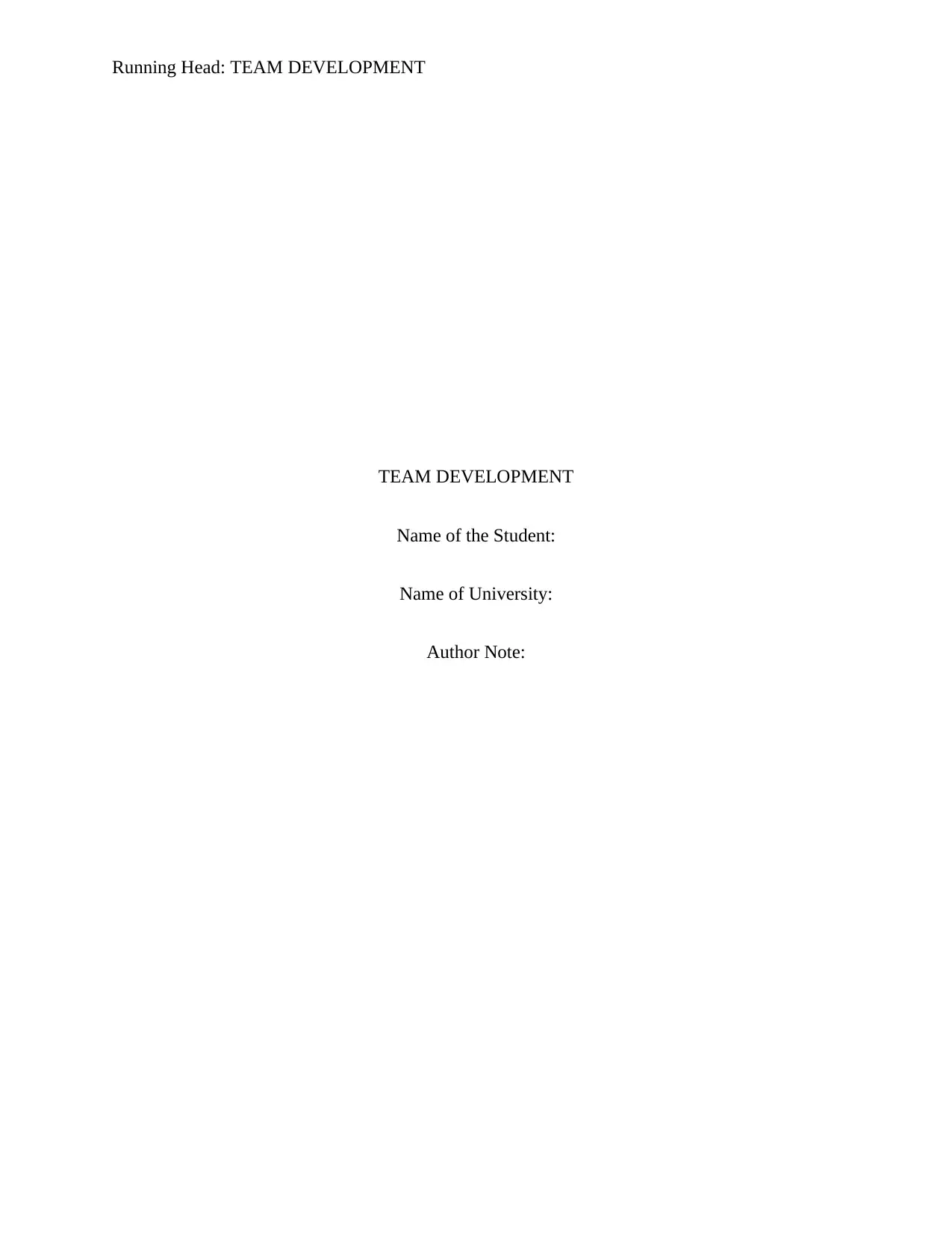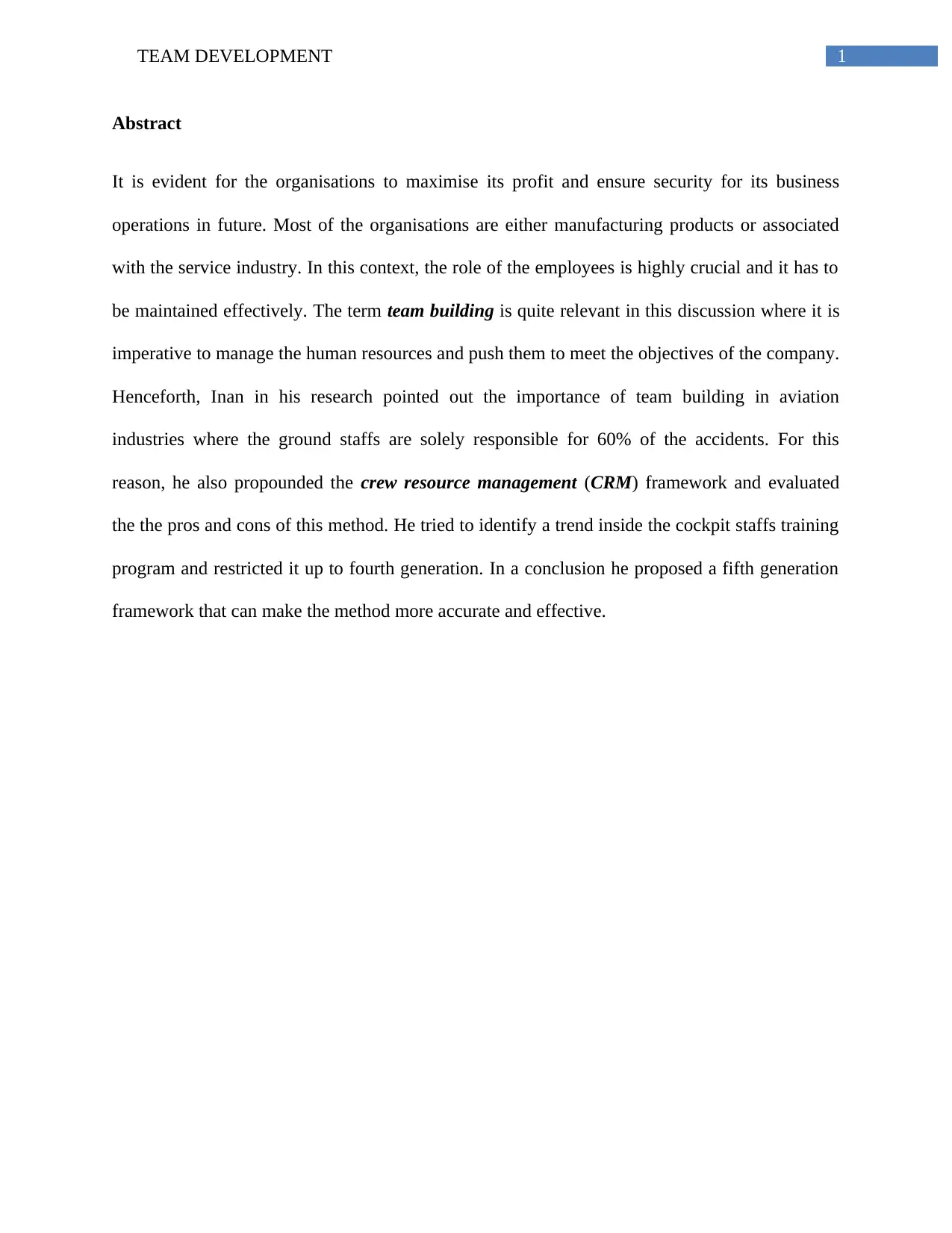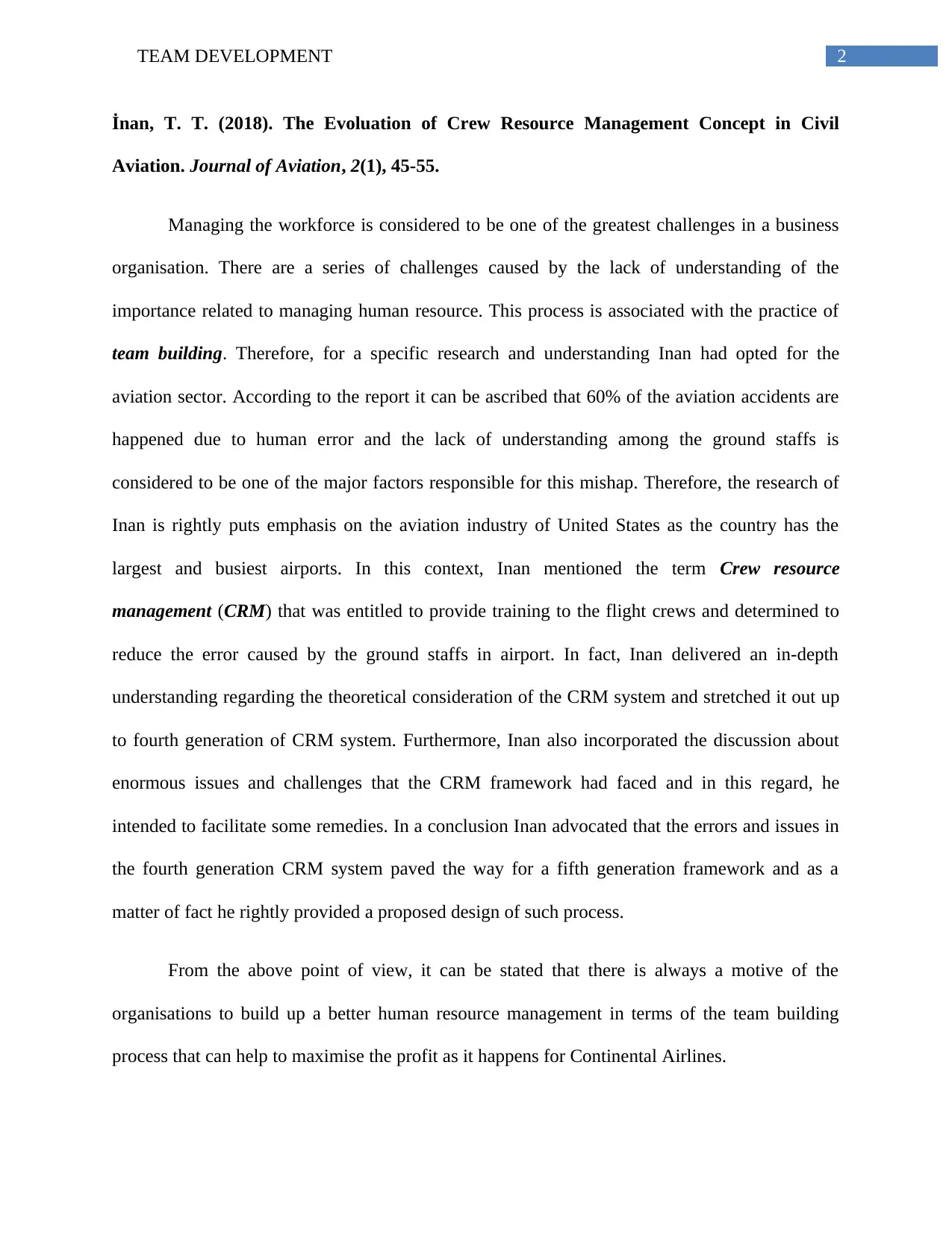Team Development and Organizational Success: Continental Airlines
VerifiedAdded on 2023/06/03
|3
|557
|378
Case Study
AI Summary
This case study examines the importance of team development within organizations, focusing on Continental Airlines' successful turnaround. The study references Inan's research on team building in the aviation industry, highlighting the critical role of effective human resource management and crew resource management (CRM) in minimizing errors and maximizing profitability. It emphasizes how Continental Airlines utilized team building to improve performance and achieve significant business success, underlining the broader implications of effective team dynamics in achieving organizational goals.
1 out of 3






![[object Object]](/_next/static/media/star-bottom.7253800d.svg)